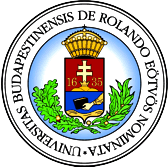Fő kutatási témák
1. Ciomadul Volcanic Expedition - Exploration of the youngest volcano in the Carpathian-Pannonian region: Ciomadul, SE-Carpathians
The last volcanic activity in our area was Ciomadul, on a Dacite lava dome complex, about 30,000 years ago. The available research data, including our own research results in recent years, suggest that a still completely cooled igneous body may be located under the volcano. Based on all this, in order to record the condition of the volcano and evaluate its future activity, further detailed research is of paramount importance, the experience of which can be used in the study of other similar types of volcanoes. The most important key issues of our ongoing research are: (1) Accurate determination of the age of eruptions and the temporality of episodic volcanic activity. (2) Exploration of magma chamber processes prior to volcanic eruption, in particular elucidation of the role of mafic magmas in dacitic magma genesis. The felsic inclusions in the dacites provide an excellent opportunity to characterize the crystal pulp zone. (3) The duration of magma chamber processes is estimated based on the determination of the magma residence time of zircons. The temporality of each igneous process is inferred from diffusion model calculations and composition distribution of trace elements in zonal minerals. (4) To clarify the nature and geometry of the deep magmatic system, magnetotelluric measurements are performed, which also include the detection of anomalies in the upper mantle.
2. Basaltic volcanic systems, monogenetic volcanic fields
Scientific work in basalt volcanic areas in our area can play an important role in the research of intracontinental / intra-plate monogenetic volcanic fields. Our research group primarily explores the conditions of magma formation, the nature of the source area of magmas, the conditions of deep magma reservoir formation, the rate of magma upflow, the change in magma composition during the construction of a monogenetic volcano, and the associated eruption mechanisms by studying the minerals in basalts in detail. During our investigations, we pay special attention to the latest basalt volcanic eruptions in our region, such as the Persányi basalt volcanic field and the Selmec-Nógrád-Gömör volcanic area. The basalt occurrences of the Bakony-Balaton Uplands and the Kemenesalja provide a great opportunity to study the basalt volcanic function in many ways.
3. Silicon-rich volcanic systems
There were massive explosive volcanic eruptions in our area 12 to 20 million years ago, some of which could have thrown volcanic material of up to tens of cubic kilometers into the surface. By studying volcanic formations, we can gain insight into the evolution of extensive silicon-rich igneous systems. The volcanic formations of Bükkalja and its surroundings provide an excellent research opportunity in this area, which has already been proven by many of our scientific studies. The research covers the study of the high-thickness Miocene rhyolite formations in our area, their stratigraphic role, the correlation possibilities, and the identification of the source areas and possible calderas.
4. Investigation of fossil magma chambers, deep igneous rock bodies that have surfaced
Degradation processes of varying degrees have brought to the surface plutonium formations in many places in our region, which, as an analogy to underwater volcanic storage systems, provide an important insight into the processes there. In our scientific work, special attention is paid to the formations of the Ditro massif, the exploration of their origin, and a better understanding of the events of magma development.
5. Volcanic eruptions in the Carpathian-Pannonian region: does the plate tectonic paradigm work?
The research work is basically related to the volcanic formations of our region formed in the last 20 million years. Research to date has raised several issues in which the plate tectonic paradigm appears to be difficult to apply routinely. What alternative approach can help to understand the relationship between volcanic formations formed in the “wrong place, at the wrong time” and the current geodynamic situation and what message does this send to study other areas (e.g. Mediterranean, Basin and Range area, etc.)?
6. Environmental and social impacts of major volcanic eruptions
Can the volcanic eruptions of historical times with a global impact in the Carpathian Basin be documented, and if so, what to expect in the event of a possible future Tambora-sized or Icelandic Laki-like volcanic eruption? How have the major volcanic eruptions in Iceland in recent millennia (eg Hekla, Katla) affected our region? We would also like to work with experts in other disciplines (eg meteorology, paleontology, history, environment, social sciences) to answer this question.
7. Volcanoes and society
How can volcanological knowledge be used to increase an environmentally conscious approach? How can we better understand the Earth’s internal structure, and natural processes? Continuing the traditions of recent years, in addition to scientific work, we place great emphasis on professionally grounded dissemination of scientific knowledge and volcano-day events. With the entries of the Tűzhányó blog (http://tuzhanyo.blogspot.hu/), we help you to find your way around the world of volcanoes in plain language, and if necessary, we will correct the sometimes frightening horror news in the media. We would like to take part in the presentation and promotion of the natural values of our region with our dissemination activities.
8. Petrological and geochemical investigation of current volcanic eruptions
As in previous years (e.g. Eyjafjallajökull, Grimsvötn, El Hierro, Tongariro eruptions), we are investigating the teflra material of recent volcanic eruptions in international collaboration, contributing to a better understanding of the causes of volcanic activity.




